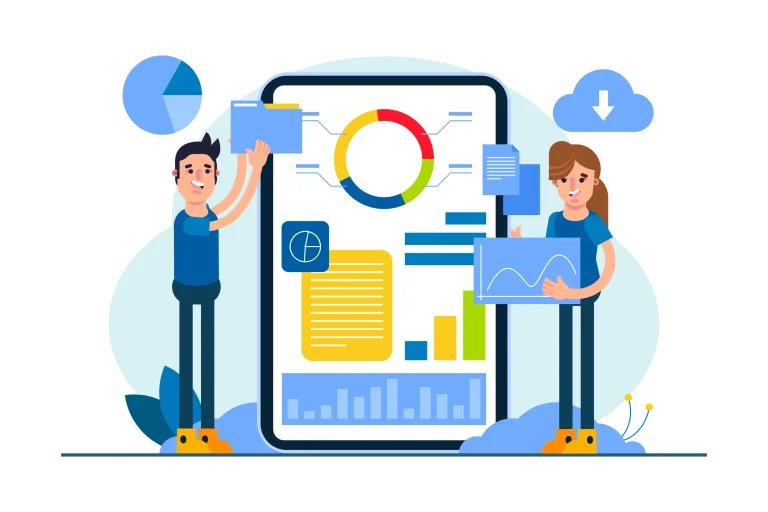How Your Website Can Serve as the Hub for All Digital Marketing Activities

Introduction
In today’s digital-first landscape, your website is far more than an online business card—it’s the central hub that connects, enhances, and amplifies every aspect of your digital marketing strategy. Whether you’re running SEO campaigns, social media promotions, email newsletters, or paid ads, everything should lead back to one primary destination: your website.
Think of your digital marketing efforts as spokes on a wheel, with your website as the hub holding them all together. Without a solid central platform, your campaigns become disconnected and inefficient. With the right strategy, however, your website can become a powerful engine for lead generation, customer engagement, and business growth.
In this blog, we’ll explore why your website is the cornerstone of your digital marketing strategy, and how to optimize it for maximum effectiveness across all channels.
Why Your Website Is the Center of Your Digital Marketing Universe
- It’s the Only Digital AssetYou Fully Own
Unlike your social media accounts or ad platforms—which are controlled by third-party companies—your website is entirely yours. It’s the only digital space where you control the content, user experience, branding, and data.
When platforms change algorithms or policies, your website remains stable. That makes it the most reliable place to build your digital presence and drive all your traffic.
- It Acts as the Final Destination for Every Campaign
Every ad click, social media post, and email link should ultimately drive traffic back to your website. That’s where conversions happen—whether it’s a sale, a newsletter signup, a contact form submission, or a phone call.
If your campaigns don’t direct users to a well-optimized website, you’re missing a massive opportunity to engage and convert your audience.
How a Website Powers Key Digital Marketing Channels
Let’s break down how your website ties into every major digital marketing activity:
Search Engine Optimization (SEO)
SEO starts and ends with your website. Keyword optimization, high-quality content, mobile responsiveness, and site speed all contribute to your site’s search visibility. Your blog, service pages, and landing pages are the foundation for organic traffic.
A well-structured website with optimized meta tags, internal linking, and rich content helps you rank higher on Google, driving ongoing, cost-effective traffic.
Key tip: Make sure your website has SEO-optimized content that speaks to your audience’s search intent and includes clear CTAs.
Content Marketing
Blogs, case studies, guides, videos, and infographics—all your content lives on your website. This content not only attracts traffic via SEO but also gives you material to share on social media, in emails, or through paid promotion.
Your website becomes a content hub that showcases your expertise and builds trust with your audience.
Key tip: Use your blog strategically. Write for your audience’s pain points, and always offer the next step (download a guide, contact you, sign up, etc.).
Social Media Marketing
Social media is great for engagement and brand awareness—but it often doesn’t convert directly. That’s where your website comes in. By linking your social posts to relevant landing pages or blogs, you can drive traffic that’s primed to take action.
When followers visit your website, they see your full brand offering, not just snippets.
Key tip: Align your landing pages with your social media campaigns to provide a consistent and personalized experience.
Email Marketing
Email marketing works best when your website is the destination. Whether you’re announcing a product, sharing a blog, or offering a discount, the call to action should lead readers to your website.
Also, your email list typically grows via website forms, pop-ups, and lead magnets. That makes your site the entry and exit point of every email campaign.
Key tip: Use dedicated landing pages with tailored messaging for each email campaign. Avoid sending people to a generic homepage.
Paid Advertising (Google Ads, Meta Ads, LinkedIn Ads)
Running ads without a strong website is like running a marathon barefoot. You need fast-loading, mobile-friendly, high-converting landing pages designed specifically for ad traffic.
Ad platforms judge your website’s relevance and user experience, which affects your cost-per-click and ad performance.
Key tip: Always create campaign-specific landing pages that match the messaging and intent of your ad creatives.
Analytics and Data Tracking
Your website is the central place where data converges. With tools like Google Analytics, Hotjar, and CRM integrations, you can track:
- Traffic sources
- Conversion rates
- User journeys
- Drop-off points
- Device performance
This data informs every digital marketing decision—from which content to promote to which ad campaigns are most effective.
Key tip: Set up goal tracking and conversion funnels to monitor how users move through your site and where improvements are needed.
Building a Website That Fuels Digital Marketing
It’s not enough to just have a website. It needs to be structured and optimized to function as your marketing hub.
- Mobile-First Design
More than half of web traffic now comes from mobile devices. A mobile-friendly, responsive design ensures a seamless user experience and boosts SEO rankings.
- Clear Navigation and CTAs
Visitors should find what they need in a few clicks. Clear menus, visual hierarchy, and strong CTAs increase engagement and conversion.
- Fast Load Time
Speed is crucial—not just for SEO, but also for user satisfaction. Every extra second your site takes to load leads to drop-offs.
- Consistent Branding
Your website must visually and tonally match your social media, email campaigns, and ads. Consistency builds brand trust and recall.
- Lead Capture and Conversion Paths
From newsletter signups to quote request forms, your site should include intuitive and accessible ways to convert visitors into leads or customers.
How to Integrate All Channels Seamlessly
Here’s how to ensure your website acts as the true central hub:
Conclusion: Treat Your Website as a Living, Breathing Marketing Tool
Too many businesses view their website as a one-time project. But in reality, it’s a living, breathing part of your digital marketing strategy—constantly evolving based on new campaigns, customer insights, and business goals.
By anchoring your digital marketing activities around your website, you gain control, cohesion, and clarity. It allows you to connect with your audience at every stage of their journey and convert interest into real results.
Your website is more than a destination—it’s the engine that powers your entire digital presence. Keep it updated, keep it optimized, and most importantly, keep it aligned with your broader strategy.
Table of content
- Introduction
- Why Your Website Is the Center of Your Digital Marketing Universe
- How a Website Powers Key Digital Marketing Channels
- Content Marketing
- Social Media Marketing
- Email Marketing
- Paid Advertising (Google Ads, Meta Ads, LinkedIn Ads)
- Analytics and Data Tracking
- Building a Website That Fuels Digital Marketing
- How to Integrate All Channels Seamlessly
- Conclusion: Treat Your Website as a Living, Breathing Marketing Tool










